The HTC One M9 Review: Part 1
by Joshua Ho on March 22, 2015 7:00 PM EST- Posted in
- Smartphones
- HTC
- Qualcomm
- Mobile
- Snapdragon 810
- One M9
Display
By now, it generally goes without saying that a high end smartphone needs to have an amazing display. However, defining what an amazing display is can often be quite difficult. We can all agree that a display should get as bright as possible and that black pixels should be as dark as possible, but some characteristics are often subject to personal biases. Something as simple as white point can divisive because some people prefer warmer colors, but others prefer a colder color balance. Color in general can be a subjective preference, as some prefer wide color gamuts and saturation compression to achieve a vivid look, but others prefer more muted and subtle colors.
However, despite subjective preference we have to all have a common standard for color rendition. After all, if pink on one screen looks like magenta on another, this could easily result in a number of problems when sharing content. Something as simple as taking a photo can be difficult with an inaccurate display, as white balance on a photo could easily appear to be incorrect for a scene even if it isn’t. As a result, in addition to judging simple characteristics such as brightness and contrast, we also test how well a display matches against the sRGB color standard with a gamma target of 2.2. In order to do this, we use our usual test suite which includes X-Rite’s i1Pro2 for accurate color and brightness measurements, along with X-Rite’s i1Display Pro for accurate contrast measurements. In order to fully utilize this hardware, we use SpectraCal’s CalMAN 5 Ultimate with a custom workflow for mobile devices.

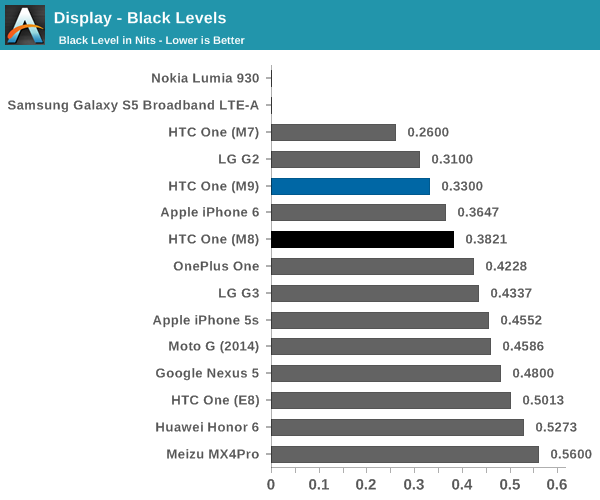
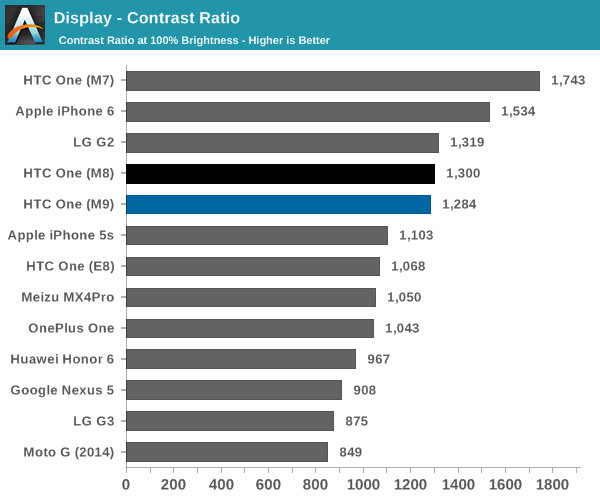
Our first test is focused on some of the basic aspects of the display, namely brightness and contrast. In this regard, the M9 seems to effectively identical to the M8. Both have some level of content-adaptive backlight control, which means that static contrast is lower than the value that we’ve tested it for.
Outside of this basic test, I noticed that the display has worse viewing angles than the M7 and M8. Although the off-angle glow isn’t visibly different when shifting the display along the horizontal and vertical axes, anything in between dramatically decreases contrast as seen in the photos below. It’s likely that this is related to the polarizers used, as the IPS glow effect is strongly angle-dependent. In practice, this really does reduce the effective contrast of the display. The brightness of the display could be higher, but it’s likely that at this point it makes more sense to target lower reflectance with improved coatings rather than driving brightness.
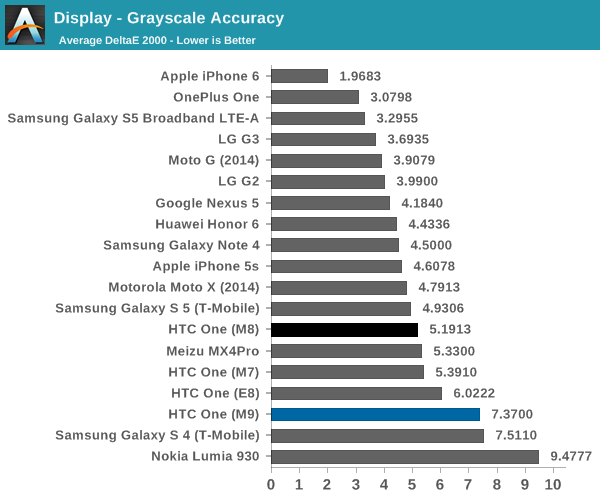
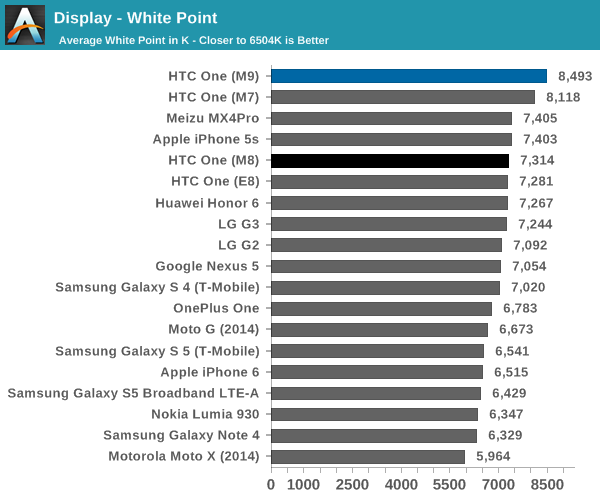
Moving on to grayscale calibration, we can see a dramatic reduction in accuracy when compared to the M7 and M8. Although gamma is generally correct, the white balance ends up far too green and blue. The next most notable issue seems to be related to CABC, as there’s a dramatic increase to gamma from 70% to 100% white. In practice, everything looks excessively cold and with a strange green tint to a lot of content, which really hurts the viewing experience. In order to get an idea for whether this is just a single point or a general trend, we can look at the saturation test which introduces multiple colors.
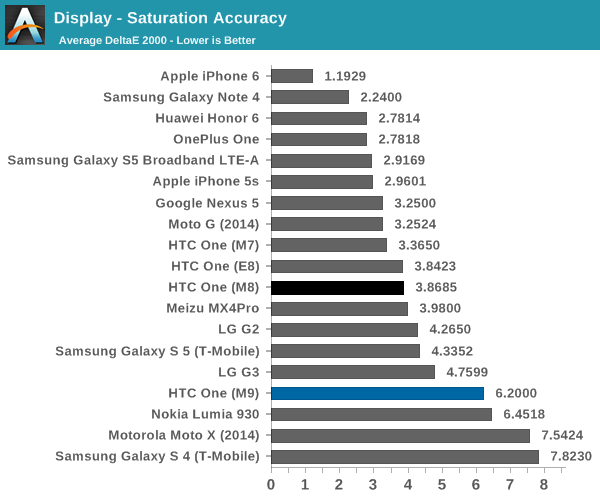

As we can see, in the saturation test this excess of green and blue in colors is not an isolated case of white balance. Colors like magenta are significantly skewed towards blue, yellow tends to skew towards green, and colors like blue and green have noticeable saturation compression. As a result, the color accuracy will be noticeably different from a monitor that follows the sRGB standard. The only positive aspect of this color calibration is that HTC has managed to constrain the gamut of the display to sRGB, unlike the M8 which noticeably exceeded sRGB.
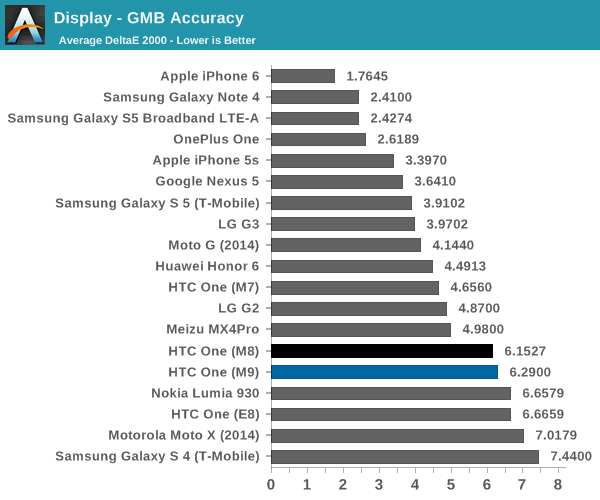
In the Gretag MacBeth ColorChecker, we can get a holistic view of color accuracy within the sRGB space which tests hue, saturation, and gamma to see display calibration as a whole. Somewhat predictably, the M9 also falls short in this scenario. Given how significant the deviations are, it would be difficult to use the M9 in any case where color accuracy is needed.
Overall, the display of the M9 is disappointing. At some point, it was clear that HTC was integrating some of the best mobile displays possible into smartphones, but starting with the M8 it seems that we’ve seen HTC slip in this area. The M9 continues this trend, which is somewhat concerning as the display of a slate smartphone tends to be a critical part of the experience. Some may be eager to point to AMOLED as an alternative, but the problem is that HTC has failed to integrate a high quality LCD into the M9. In the near future though it seems that it may make sense for HTC to move to AMOLED. However, it’s unlikely that such a move would result in any reduction of bezel size as all current displays require a display driver that must be placed directly next to the display.



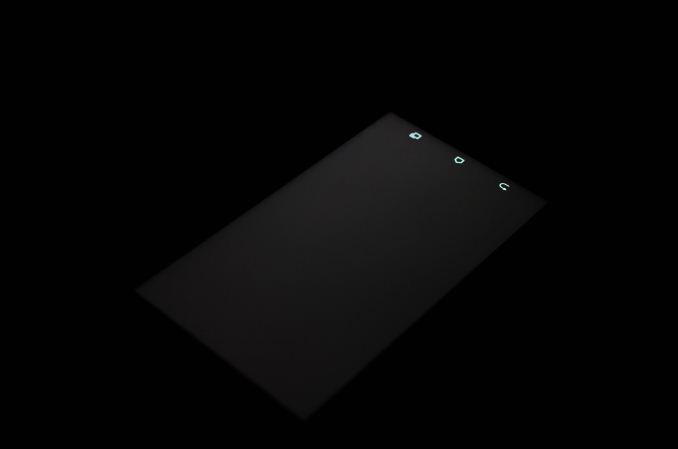
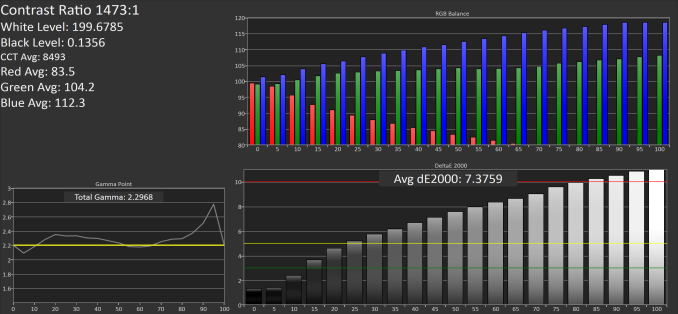
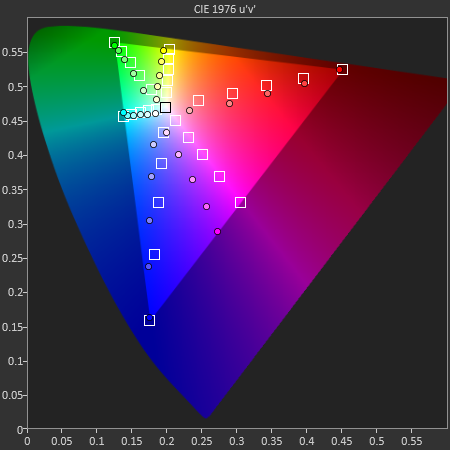
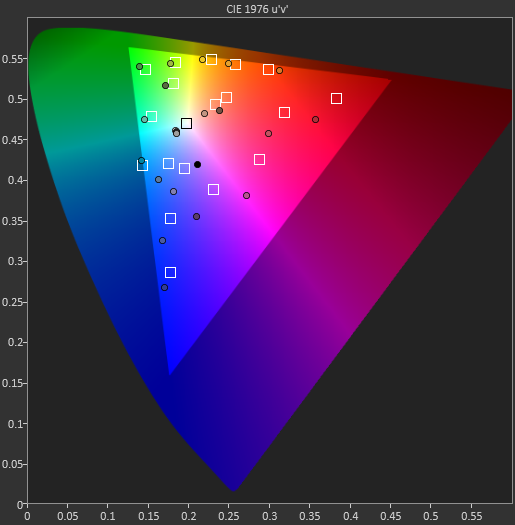








132 Comments
View All Comments
Shadowmaster625 - Monday, March 23, 2015 - link
With 1080p snapdragon 801 phones regularly pricing in at $300, this phone clearly offers nothing to justify twice as much money. Why would anyone want this over an M8 for half the price? The battery dont even last as long. Wow.tipoo - Monday, March 23, 2015 - link
I wonder if it sticking far from its max clock speed has to do with the "fix" for its initial overheating issue, imaged below. I wish Android SoC makers would stop pursuing stupidly high clocks that they throttle back from in seconds. This whole thing might be confirmation that Samsung moved away from Snapdragon for the throttling/overheating.http://www.droid-life.com/wp-content/uploads/2015/...
testbug00 - Monday, March 23, 2015 - link
Yes, not running the SoC at a level where the heat dissipation was to high for the case to handle fixed problems.Anyhow, the 810 has no thermal problems. Phone manufacturers cramming a 10W+ SoC into a phone and than people expecting it to be able to draw 10W+ over an extended period of time without causing heat issues are the problem.
Tigran - Monday, March 23, 2015 - link
Dear AnandTech, two questions:>>> For those that are unfamiliar with how HTC's CPU cheats work, HTC continues to rely on some level of benchmark detection, and it seems that when a benchmark is detected it enables a "High Performance" mode in the developer settings with no option to disable this mode. It's possible to work around this mode by using benchmarks that evade such detection mechanisms (and we do), but it's also possible manually toggle this mode on and off if a benchmark isn't detected. <<<
1) Was High Performance mode disabled in all CPU/GPU tests performed in Part I?
>>> We'd normally go into depth about the PCMark, GFXBench, and Basemark OS II battery life results at this point but the new software update precludes this from happening at all as all three could be significantly impacted by changes to thermal throttling. In GFXBench, I saw a change from 1.73 hours to around 3 hours of battery life on our infinite T-Rex rundown test, and in PCMark I noticed that the M9 reached about 40C, which brings it close enough to the new update's maximum skin temperatures that all three tests must be re-done. <<<
2) So are we to see infinite GFXBench test with actual fps in Part II? And why must you re-done tests because of the thermal throttling - isn't it going to be constant part of M9's software? Are you going to disable this thermal throttling in your following tests?
JoshHo - Monday, March 23, 2015 - link
We do not enable HTC's high performance mode for performance benchmarks but we try to avoid throttling the SoC.Tigran - Monday, March 23, 2015 - link
It seems quite reasonable with high performance mode off, but if you disable throttling (enabled by M9's software) will it represent M9's real performance?JoshHo - Monday, March 23, 2015 - link
We can't disable the throttling mechanisms without root. For performance benchmarks (not thermally limited) we will often use cooling pads to try and avoid throttling.Tigran - Monday, March 23, 2015 - link
So you don't root and disable throttling, do you? But I don't understand what's the purpose of using cooling pads, if it doesn't represent real situation of the users. Do you allways use cooling pads in tests "not thermally limited"? I'm afraid I don't know which test are thermally limited and which are not.Sorry for asking many questions, I'm a tech blogger from Russia and often quote your reviews (I believe they are the most professional and unbiassed).
JoshHo - Tuesday, March 24, 2015 - link
In general it isn't necessary to use additional cooling for most phones, but we do this in order to try and standardize the test conditions because we can't standardize room temperature and what surface the phone is on well enough. The tests where we don't do this are part of the battery life tests, which is why throttling is often seen in those tests.Tigran - Tuesday, March 24, 2015 - link
Thanks a lot for your answers, Joshua. Looking forward to see Part II, with infinite tests and SD810's long-term real performance.